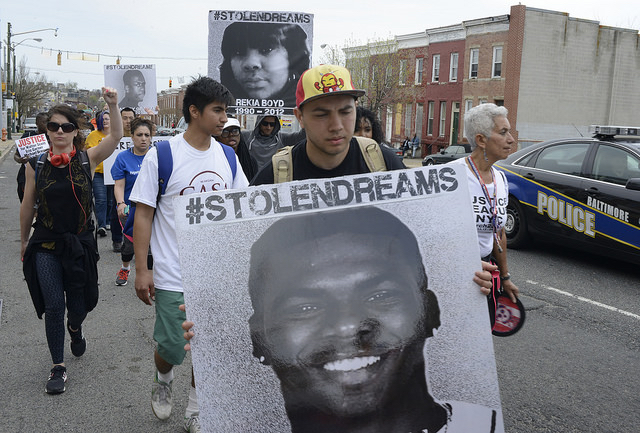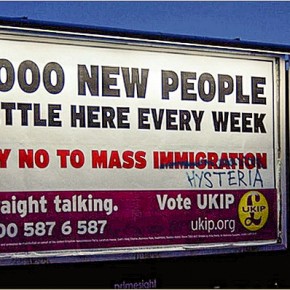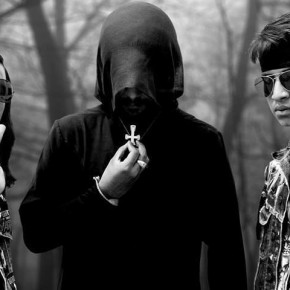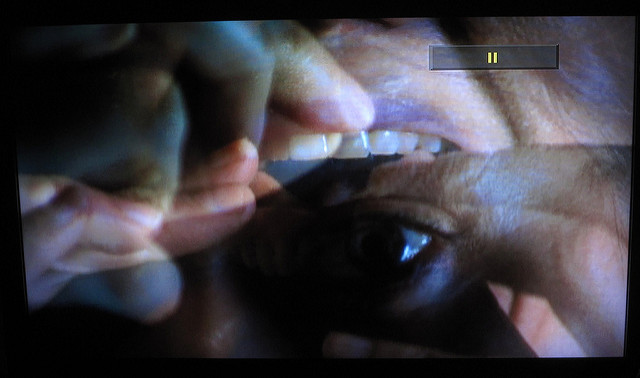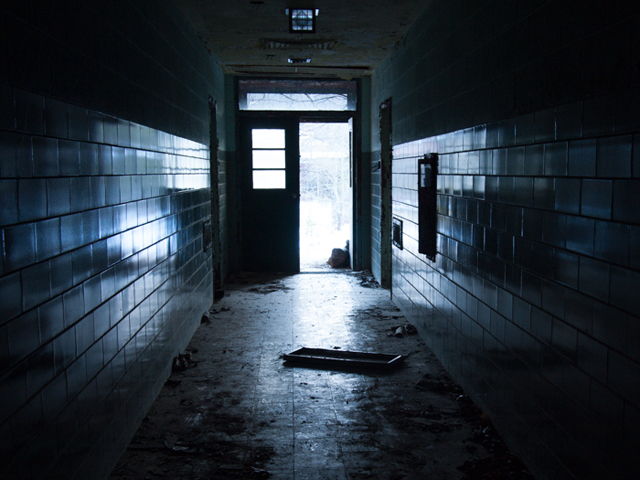When my family moved to Maryland in the summer of 1979, I was only eleven years old. Yet I already knew enough American history to be intrigued by the prospect of living south of the Mason-Dixon Line. I had absorbed enough from family vacations to have a pretty clear sense of what that would have meant in a state like Georgia or South Carolina. Maryland, though, confused me.
It still does. Much of the time, the state lives up to its reputation as one of the sturdiest fortresses of the American “Left”, seeming to have far more in common with Massachusetts than it does with its neighbors to the south. But then, in times of extreme duress, such as we have witnessed in Baltimore these past few days, a different reality emerges, one rooted in Maryland’s distant past.
In the years leading up to the Civil War, Maryland was considered a slave state. Like Kentucky and Missouri, which also lie just south of the Mason-Dixon Line, it never seceded from the Union. But as a so-called Border State, it was also full of Confederate sympathizers, many of whom crossed the Potomac to fight alongside Robert E. Lee’s troops.
This peculiar in-between status actually benefited the state significantly in the years immediately following the war. Unlike the former Confederacy, which had been ravaged both by battles and their ugly aftermath, Maryland — again, like Kentucky and Missouri — emerged largely unscathed. And Baltimore, the state’s largest city, witnessed an economic boom, taking advantage of the damage to Southern transportation hubs like Richmond and Atlanta to profit from its location near the headwaters of the Chesapeake Bay.
It also didn’t hurt that Baltimore was less than fifty miles from the rapidly expanding nation’s still-sleepy capital, Washington D.C., which had actually ended up being on the border between the Confederacy and the Union. Throughout most of the twentieth century, these two cities developed a symbiotic relationship. Baltimore was the industrial powerhouse, full of factories and the railroads and shipping that served them. Washington D.C., by contrast, was largely devoted to paper-pushing, as the Federal bureaucracy expanded in rapid bursts during the Progressive Era and World War I, then Franklin Roosevelt’s New Deal during the Depression, and finally with the smooth transition from World War II’s near-total mobilization to the heightened readiness — and concomitant expenditures — of the Cold War.
As different as these two cities were in many respects, however, they shared two traits that continue to shape them to this day: a proportionally large African-American population, swelled by migration from the former Confederacy, and Jim Crow laws engineered to keep that population in check. To be sure, de facto segregation existed in many places north of the Mason-Dixon Line and west of its terminus. But it was in the former slave states that it was most vigorously policed. Although Maryland may not have been as bad a place for African-Americans as Mississippi or Alabama, they were still reminded every day that they were second-class citizens.
By the time I moved to Maryland, Jim Crow laws had long since been wiped from the books. Yet the more subtle forms of discrimination they had encouraged were still very much in evidence. When my parents purchased our new house in Prince George’s County in late 1978, I learned that I would be spending sixth grade at Randolph Village, an elementary school only a few miles closer to Washington D.C., but which even then was located in one of the inner suburbs from which white homeowners had been fleeing for years. Because our house was in a rural subdivision too dispersed to muster much political will, its entirely white student-age population was slated to be sent to this mostly black school to assist in countywide integration efforts.
As my parents soon learned, Prince George’s County was only then, on the cusp of the 1980s, complying with a court order to desegregate. And “White Flight” was complicating the task greatly. Thus, by the time my mother, sister and I joined my father in Maryland the following June, I was no longer going to be bussed to Randolph Village, which was instead going to be shut down. Instead, I would be joining many of the African-American students from that school at Kettering Elementary, which was located in the middle of a postwar planned community that was still almost entirely white.
Because the white students who had been at Kettering since kindergarten knew that I had come in with the Randolph Village kids, they simply assumed that I was one of those lower-class “black” whites who had been too poor to abandon the inner suburbs. Most of them barely spoke to me. My African-American classmates, though, gave me a warm welcome. They knew I had little in common with them. But they could also tell that I knew almost the ins and outs of surviving in an environment rife with racial tension and decided to include me in their social activities.
For one strange year, I had the experience of seeing life from an African-American perspective. Considering that my previous exposure to diversity had come almost entirely from television — Sesame Street, Roots and the news I watched from New York and Philadelphia — this came as a major shock. My teacher was a wonderful African-American woman who had also come from Randolph Village. The white students in my class, which was tracked as the lowest of Kettering’s four sixth grade cohorts, were not happy about this, feeling that their social status was suffering as a consequence. Yet despite being aware of this, she proceeded to teach the same Afrocentric curriculum she had developed for teaching classes where all but a few students were black.
Despite having been radically misclassified as a student with learning disabilities — my records had never arrived from my old school — I was permitted to dive into social studies without restriction. I loved learning about Africa. And I loved learning about the heroes of the African-American community, from Robert Mugabe — this is when Zimbabwe was just becoming an independent nation — to Marion Barry, not to mention forebears like Frederick Douglass, Martin Luther King Jr. and Malcom X.
My musical tastes, too, adapted to this surprising new reality. Suddenly, I was buying 45s from the little soul shop in the plaza up the road that was only then beginning to cater to African-American customers. Earth Wind and Fire, Michael Jackson, Diana Ross, and my first 12” single, “Rapper’s Delight” became my cultural touchstones. The white students in my class made fun of me for trying too hard to fit in with my black friends. But I didn’t care, since they were my only friends.
When I think back on that year, it is with both tremendous gratitude and deep sadness. I would spend my junior-high and high-schools in a school that had only a few students of color. I tried to stay in touch with the friends I’d made in sixth grade, but gradually lost touch with them, as it was so easy to do in those years before social media. And with each passing year, I would witness the further decline of the communities where they had lived, as White Flight gave way to Black Flight and Washington D.C.’s inner suburbs in Prince George’s County became some of the most dangerous places in the United States.
In order to get to the center of Washington D.C. from my parent’s house, that impressive area where monuments and massive government buildings dominate the landscape, it was necessary to drive deep into those inner suburbs to board a Metro train. Or, if you wanted to drive all the way into the city, as my father did on his way to work, you had to traverse miles of “outer city” as well, that liminal zone in which the excitement of the capital was a distant mirage on the horizon, the sort of place where commuters made sure to roll up their windows and lock their doors.
There was no river to indicate where Maryland ended and the District began, just a gradual intensification of urban blight as the border approached. Over time, as better-off African-Americans fled the inner suburbs for places like Kettering and crack took hold in their absence, even this distinction would disappear. A similar trend could be discerned in the Baltimore area, but largely within the city limits, as working-class neighborhoods were decimated by the loss of traditional blue-collar jobs to competitors overseas.
While the transition to a “post-industrial” economy affected all the city’s ethnic groups, its worst effects fell disproportionately on African-Americans, who were historically the last to be hired and the first to be fired. To make matters worse, Federal and state laws concerning the distribution and consumption of narcotics were implemented in such a way that the drug of choice in white suburbia during the 1980s, powdered cocaine, was treated more leniently than its cheaper “rock” form crack. Possessing even miniscule amounts of the latter could send people to prison for long enough to do irreparable damage to them and their families.
All this has been exhaustively documented by now, but that hasn’t done much of anything to help the hardest hit sectors of the African-American community. On the contrary, as the widening gyre of globalization has eaten away at the white middle-class, the attention devoted to urban poverty has steadily diminished. And what attention has been given has primarily been directed towards redevelopment projects that displace minorities from the center of cities towards the “outer city” and inner suburbs, far from tourist attractions.
Indeed, Baltimore helped to lead the way in this regard with the 1980 opening of Harborplace, a complex full of restaurants and shops intended to lure visitors back to the urban core. In junior high and high school, all the field trips we took to Baltimore always culminated with a stop at Harborplace, which had a magical allure for us suburban teenagers. No matter how hard my classmates may have tried to ignore the urban blight we drove through to get there or to the museums of the Smithsonian Institution in Washington D.C., it still made its presence felt. We were glad that Harborplace had come into existence because it meant that there was a “safe space” set aside for our pleasure within cities that would otherwise have been too overwhelming to manage. But we were also keenly aware that a very different world lurked nearby.
I remember one field trip in particular. We had taken a school bus to Baltimore to visit the Edgar Allan Poe house, which contained a museum devoted to the famous writer. Normally, the bus driver would just park outside our destination and wait for us to be done. That day, however, he was anxious to leave as soon as possible. Even though it was the middle of the day and we were only ten blocks west of the city center, he was afraid of what might happen if he waited “like a sitting duck,” as he put it. That worry had a profound effect on us students. On subsequent trips to Baltimore we would wonder aloud how close we were to this danger zone.
Years later, when I was watching the landmark HBO series The Wire, which chronicles life in the bleakest portions of West Baltimore, I was taken aback to hear the Poe House referenced in one episode. Tourists looking for stop to ask directions. But the show’s characters, misunderstanding the question, reply that pretty much every house in that area is a “po’ house.” I thought of that scene when the protests of Freddie Gray’s brutal treatment by police turned violent, because it perfectly captures the split between the two Baltimores.
As I write this, the Baltimore Orioles baseball team is slated to play a home game tomorrow in an empty stadium, because city officials believe it would be too dangerous to let fans make the trip amid the continuing unrest. The stadium, Camden Yards, is located not far from the Poe House, in a portion of the city just west of downtown and Harborplace that began to be redeveloped in the 1990s. Frequently a source of civic pride, along with the adjoining football stadium where the Ravens play — a team whose name was inspired by Edgar Allan Poe’s most famous poem — Camden Yards also communicates a troubling message about urban renewal, which too often proceeds at the expense of the people who need it most.
Witnessing this deeply entrenched inequality always makes me sad. On my last few trips back to Maryland, I have found myself lingering in those neighborhoods I once traversed as quickly as possible, hoping to find evidence of positive change affecting the people who actually live there. To be honest, though, it has been difficult to find. That’s why I wasn’t at all surprised at the events of the past few days. When you are a young person growing up in the same bleak circumstances as your parents and, in some cases, grandparents, finding a reason to believe in your city and care for it doesn’t come easy.
This is a terribly depressing realization. But it has been even worse by the response to the protests I’ve seen on my social media feed. Because both my sister and I went to school in Maryland, I am “friends” with a lot of people who still live in the state. The vast majority are white and middle-class. And quite a few of them are apparently racists as well. It’s one thing to ask whether the tactics deployed by the protestors are effective or to lament the destruction they have wrought on their own community. To write about them as if they were animals — “Who left the zoo doors open?” was a recurring theme — or indict them for being lazy and stupid is another entirely.
As I came across one offensive comment after another, I recalled my experience in the sixth grade, when I saw firsthand how segregation can function quite well in an “integrated” setting. It seems strange to think of sixth graders plotting revenge. Yet that was the impression my white classmates often gave back then, complaining under their breath about the fact that their black teacher refused to alter her teaching to suit them. Some of those students, no doubt, have ended up in positions of authority where they can do their part to reinforce white privilege. And some of my black friends from sixth grade are no doubt suffering as a consequence.
It’s sobering to realize that, despite the fact that Barack Obama is in the White House, life for many of the African-Americans who live nearby has gotten worse since 1979. The last years of the Carter Administration are not usually regarded as a hopeful time. But in some ways they represented a high-water mark for social justice. Although Ronald Reagan may have declared that it was once again “morning” in America, the truth is that the revolution he helped inaugurate has left a lot of the country in a perpetual twilight. And nowhere is that more dramatically apparent than in the poor neighborhoods surrounding Baltimore and Washington D.C., where hope is the rarest commodity of all.
Photograph courtesy of Steven Melkisethian. Published under a Creative Commons license.
